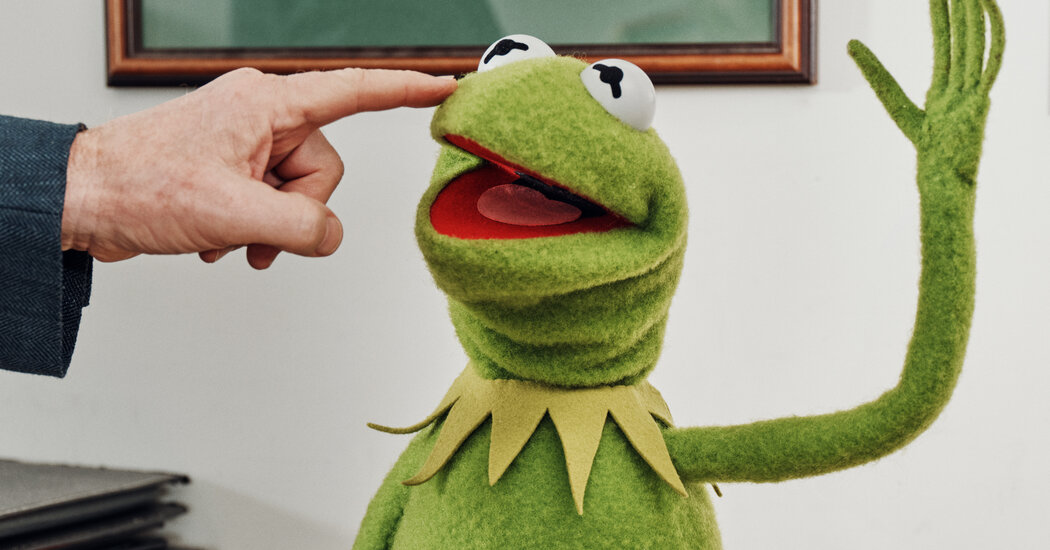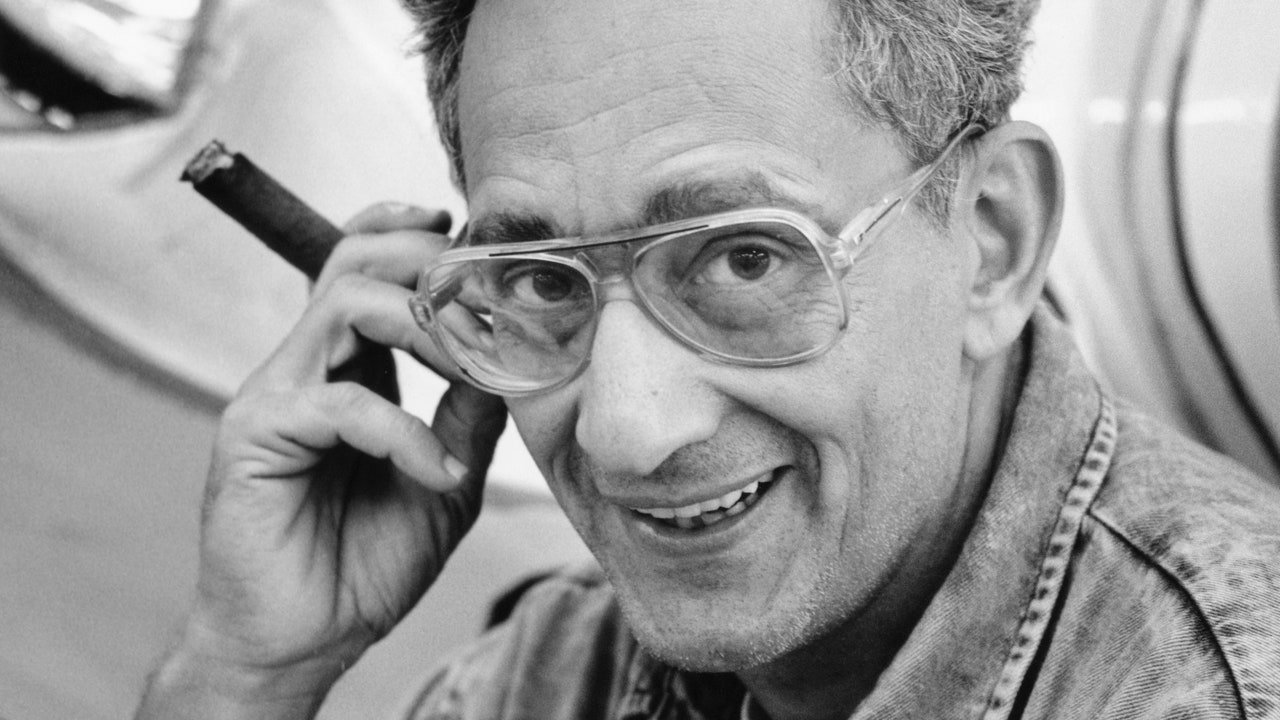“Have you ever cared for someone in incurable pain?” asked the French artist Marguerite Humeau as we ambled around her 160-acre earthwork in the Colorado desert. “I have,” she added decisively. Was she referring to the planet Earth—specifically, to this arid landscape she’d been tending to for the past three years as it endures a two-decade megadrought—or to a beloved human? I suspected a bit of both.
One must tread lightly around Humeau’s latest work, which is titled Orisons and located in the San Luis Valley. Nestled under a big sky, the work extends further than the eye can see, spanning 160 acres. More than 80 small, kinetic sculptures are scattered about, many of them just over a foot tall. Visitors must remain attentive so as not to miss, or bump into, these sculptures—and, so as not to step into one of the numerous ankle-deep kangaroo mouse holes that litter the landscape.
Marguerite Humeau: Orisons, 2023.
Photo Julia Andréone and Florine Bonaventure. Courtesy the artist and Black Cube Nomadic Art Museum.
Humeau deliberately cultivated this kind of attentiveness, asking you to think carefully about where you step. There is significant distance between the sparsely populated sculptures, and visitors, as they search for these works, are asked to bring the same reverence to both the artworks and the land. In fact, Humeau insists that “the land is the artwork,” adding that it’s a work about “transience and resilience, life and death,” as well as “coming from and returning to dust.”
Orisons is not the kind of monumental intervention into the earth that typifies the Land art genre—think Michael Heizer’s vast and newly completed City, or Robert Smithson’s iconic Spiral Jetty, which has jutted into Utah’s Great Salt Lake since 1970. Pulling up to the site, or looking at photos of Orisons, one might wonder what the artwork is, exactly. When we spoke, Humeau wagered convincingly that “perhaps the lighter touch is the more impactful touch.” Her piece is on view until June 30, 2025, rather than indefinitely, as is the case with other earthworks.
Humeau’s is a work staunchly uninterested in controlling or dominating the landscape. It is bent instead toward cultivating appreciation for what came before. Piles of bricks that Humeau calls “benches” are scattered throughout, and though they don’t look much like seating, they are clearly the most hospitable place for rest and contemplation.
The site also features several stunning hammocks that invite the viewer to commune with the land. Ropey nets are anchored by sculptural steaks that culminate in sweet heart shapes. They’re painted in blues and pinks that blend in with the sky at golden hour, but they’re also punctuated with splashes of high visibility orange to catch the meandering eye. The hammocks are intended, the artist says, to enable you to hover over the land like a bird.
On a tour at the opening, Humeau also took visitors into an abandoned cattle pen. It was already on site when she arrived, and she considers it part of the project. She asked us to sit low and assume the vantage of the cows that once populated the land, an unfarmable plot currently owned by a family of organic potato farmers.

Marguerite Humeau: Orisons, 2023.
Photo Julia Andréone and Florine Bonaventure. Courtesy the artist and Black Cube Nomadic Art Museum.
Walking about, visitors might encounter the bones of a cow or a tomb Humeau made for a dead bird she found on the property. It occurred to me that this is not normal human behavior, to pay respect to birds and cows, but it really ought to be. By the time you read this, those corpses may already be gone with the wind, which blasts intensely in the arid, high-altitude San Luis Valley.
The wind, Humeau pointed out, has carried ancient sand to and from this valley for thousands of years, dropping it off at North America’s tallest dunes, which are visible on the horizon from the hammocks. These majestic, massive dunes are easily mistakable for mountains.
Humeau, who was born in France and is now based in London, worked on the project with the Black Cube Nomadic Art Museum, which is headquartered in Denver and commissions site-specific works. The museum enabled her to spend time in the valley over the past three years, where she enlisted collaborators to explore what exactly came before. These include conservationists, historians, ornithologists, indigenous communities, and geomancers. That latter term describes clairvoyants who read landscapes like palms, or as the artist says, “they can see the landscape past, present, and future.”
The three geomancers independently sensed a 150-year-old sadness on the property, in the lot’s northwest corner, where a jumbled wire fence lies in chaotic disarray. There, they say, a woman is trapped. Her family tried to settle the land in 1850, but in the process, she passed away, likely at the hands of the harsh climate.

Marguerite Humeau: Orisons, 2023.
Photo Julia Andréone and Florine Bonaventure. Courtesy the artist and Black Cube Nomadic Art Museum.
Worried about the trapped woman, Humeau wanted to give her a gift. So she planted divination instruments that only spin at very high winds. “Maybe when a storm comes they will spin,” she told me, “and she will be set free.”
Before she began the project, Humeau thought it important to speak with local indigenous communities, who consider several sites in the region sacred. Eventually, she came to meet a member of the Ute Mountain Ute Tribe of Towaoc named Regina Lopez Whiteskunk, and they discussed both mourning the land and the weight of history. Whiteskunk told Humeau that “to move the Earth is to release the trauma.” The artist asked Whiteskunk if she wanted to contribute, and before production began, Whiteskunk blessed the land as her father played the flute.
Orisons is a significant departure for the artist, who was included in the most recent Venice Biennale, where she showed stunning, gorgeous, and permanent sculptures concerned with speculative and extinct ecosystems. But now, instead of imagining the world before and after humans, she is grappling with the fraught ways our species occupies this planet—the imperfect ways we cohabitate with other forces and beings. It’s not just a departure, but a whole new theory of art, one suited for these end times. “I’m pretty convinced that the future of art is not about new things, but about designation and poetry,” Humeau said, adding, “Maybe we can use poetry to acknowledge the presence of what is already here.”



